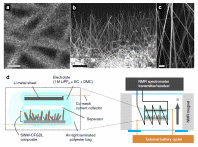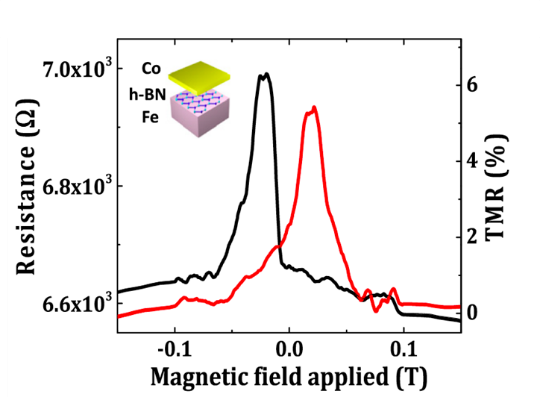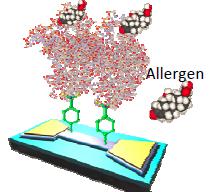Device Applications
CVD enabled 2D Material Technology and Devices
Future novel materials are unlikely to have high intrinsic value just by themselves. Instead it is the way that “new” and “old” materials will be integrated into components and systems to enable new designs and improved performance that will provide the value and long-term impact. We investigate not only growth, process and characterisation/standardisation techniques for novel 2D materials, but also address their effective interfacing with other “standard” materials and device and system integration across traditional boundaries. The challenge of interfacing 2D materials is quite different to bulk materials, as ultimately a 2D mono-layer has no “bulk” and intrinsic properties are hard to define as interface interactions can dictate their properties. Hence, more than ever, there is a need to understand interfacing and complex device behaviour of nanomaterials. We aim to address key questions of industrial materials development for 2D materials, including front and back end integration routes for a diverse set of near-term as well as future applications, ranging from advanced transparent conductors for organic light emitting diodes and liquid crystal devices, to opto-electronics, THz and lab-on-a-chip devices.

In collaboration with:
Prof. U. F. Keyser, Dr R. Degl’Innocenti, Prof. D. Ritchie (Physics, University of Cambridge)
Prof. T. Wilkinson, Prof. A. Nathan, Prof. J. M. Kim, Prof. J.Robertson, Prof. A. C. Ferrari (Engineering, University of Cambridge)
Thales (France)
Aixtron (UK)
Philips Centre for Process Innovation Ltd. (UK)
References:
Aria et al. ACS Appl. Mater. Interfaces 8, 30564 (2016)
Degl’Innocenti et al. ACS Photonics 3, 1747 (2016)
Walker et al. Appl. Phys. Lett. 107, 213104 (2015)
Qasim et al. Nanoscale 7, 14114 (2015)
Sanders et al. Nanoscale 7, 13135 (2015)
Advanced Materials for Energy Efficient Information and Communications Technologies (ICT) and Integrated Energy Systems
The field of ICT offers tremendous opportunity for radical technology changes, most of which will be driven by energy efficiency. Current technologies for energy usage, generation and storage all operate way below limits set by thermodynamics and there is huge potential to introduce radical changes that derive from fundamental scientific advances in materials-based technologies. The added value from improved energy efficiency is very high in the ICT sector, particularly for mobile devices. This makes the ICT sector one of the most attractive market entry points for new materials technologies. We investigate the use of nanostructured materials for instance in electrode materials and thermoelectric devices. We target a fully integrated approach, from the design and synthesis of new materials, their integration at the nano- meso- and micronscale into composite structures with controlled interfaces, and their integration into the device. The challenge is to control interfacial structures, both “as-synthesized/grown”, but more critically under the differing conditions of, for example, temperature and chemical potential occurring during operation. We use new metrologies to characterise interfaces under operando conditions, and via understanding the key underlying mechanisms aim at new design principles.
 In collaboration with:
In collaboration with:
Prof. C. Grey (Chemistry, University of Cambridge)
Prof. H. Sirringhaus (Physics, University of Cambridge)
Dr. R. V. Kumar (Materials, University of Cambridge)
Prof. R. Schloegl (FHI, Germany)
References:
Ogata et al. Nature Comm. 5, 3217 (2014)
Xi et al. Nanoscale 6, 5746 (2014)
Resistive Switching & Neuromorphic Computing
Resistive switches (RRAMs) are part of a range of emerging technologies that enable highly scalable non-volatile memory but also logic-in-memory architectures, i.e. bringing together logic and memory and thereby not only significantly increasing energy efficiency but also opening pathways to new functionality such as neuromorphics and cognitive computing. Towards this goal, we explore resistive switching phenomena in novel materials and device designs. We investigate new techniques to characterise in-operando the resistive switching effect in realistic device configurations, to foster an understanding of the nanoscale electrochemical reactions responsible for RRAM behaviour.
 In collaboration with:
In collaboration with:
Dr I. Valov (Peter Gruenberg Institute, Germany)
Prof. J. Driscoll (Materials, University of Cambridge)
Prof. J. Baumberg (Physics, University of Cambridge)
Dr G. Di Martino (Physics, University of Cambridge)
References:
Cho et al. Nature Comm. 7, 12373 (2016)
Di Martino et al. Small 12, 1334 (2015)
Spintronics
With hundreds of millions of computer hard drives sold every year, magnetism is currently the main repository of information storage. It is the electron “spin,” the elementary nanomagnet, that carries the information. Beyond storage, spintronics and such new device architectures are foreseen as the foundation for a new paradigm for information processing toward low power-consumption nonvolatile “green” electronics. We investigate new integrated electronic and spin-based device concepts based for instance on 2D materials. We also study the interfacing with chiral molecular semiconductor structures for spin engineered optoelectronic semiconductor devices. In collaboration with:
In collaboration with:
Prof P. Seneor, Prof. A. Fert (CNRS/Thales, France)
Prof. T. Endoh, Prof. K. Ito (Tohoku, Japan)
Prof. R. Friend (Physics, University of Cambridge)
Hitachi Cambridge Labs
References:
Piquemal-Bnaci et al. Appl. Phys. Lett. 108, 102404 (2016)
Dlubak et al. ACS Nano 6, 10930 (2012)
Biomimetics: functional dry adhesives
Non-specific dry adhesion, i.e. gluing on any surface without viscoelastic liquids or mating architectures such as hook-loop fasteners, is highly desirable for applications ranging from vacuum technology to robotics, space travel and medicine. The ability to control adhesion in nature is in many cases connected to van-der-Waals interactions and capillary forces on micro- and nanostructured contact surfaces. The feet of beetles, flies, spiders, and geckos are decorated with dense mats of hierarchical fibrillar structures enabling molecular contact over large areas, thus translating weak van-der-Waals interactions into enormous attractive forces which allow them to climb any wall. We are investigating new pathways to functional dry adhesives via hierarchically engineered structures, such as carbon nanotube-polymer structures. We systematically investigate the underlying adhesion mechanisms and are also interested in designing additional functional aspects, such as high electrical and thermal conductivity.
 In collaboration with:
In collaboration with:
Dr. W. Federle (Zoology, University of Cambridge)
References:
Rong et al. Adv. Mat. 26, 1456 (2014)
Chen et al. ACS Appl. Mater. Interfaces 7, 3626 (2015)
Biosensor platform technology
We investigate novel, generic, real-time monitoring sensor technology, based on chemically modified graphene transducers. We currently focus on food allergen detection, as part of a feasibility study with industrial partners. We develop new 2D material-based device designs for large scale sensor integration. In collaboration with:
In collaboration with:
Prof. O. Guy (Swansea University)
National Physical Laboratory (NPL)
Unilever
Hexagonfab